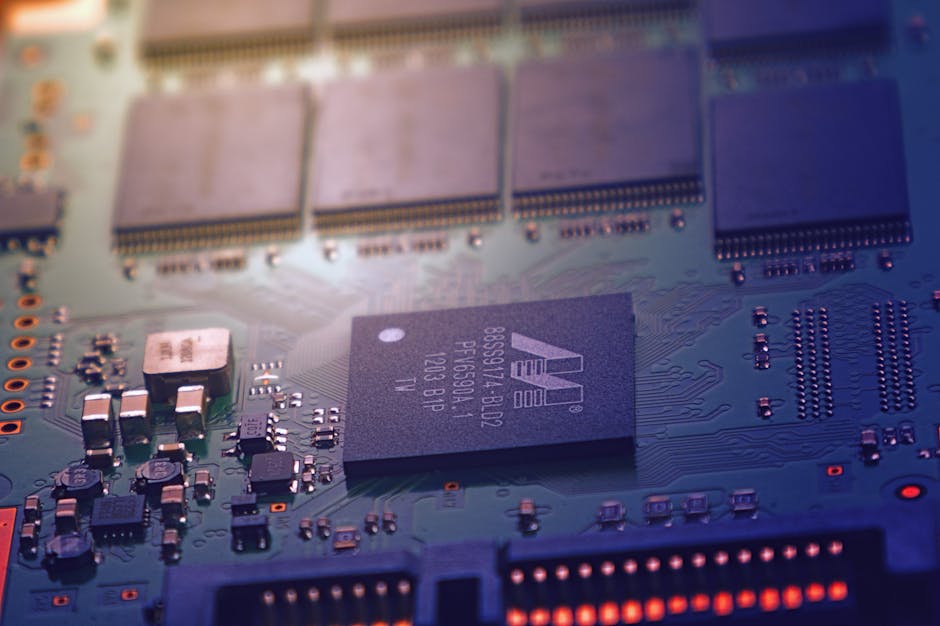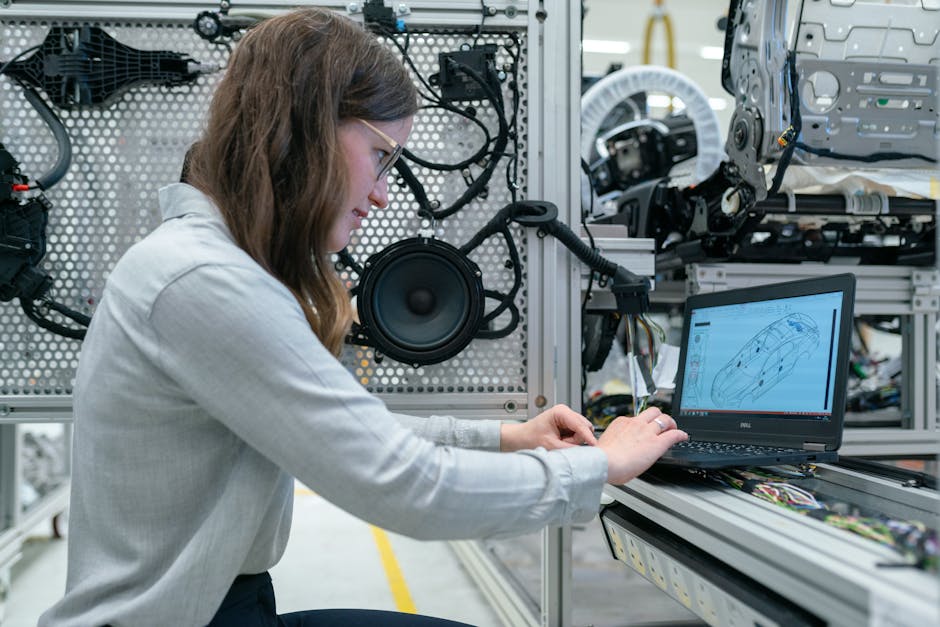I tried Honor's new Earbuds Open and they jumped right to the top of a growing pile - Related to power, releases, (pr), macbook, m4
I tried Honor's new Earbuds Open and they jumped right to the top of a growing pile

Honor has launched its first ever open-ear earbuds – and I tried them.
Noise cancellation and AI translation are among the unusual functions.
Honor Earbuds Open's 'industry-first virtual bass algorithm' is a big hit.
Sometimes when trialling a set of earbuds designed specifically not to enter your ears, I approach them slightly differently. And by 'differently', I mean that I try to get my other half to put them on in the first instance.
This is because he, for whatever reason, finds all of the best earbuds – specifically putting any in-ear design actually into his ears – abhorrent. Even some open-ear options have made this near-phobia kick in as he tried to fit them. The Honor Earbuds Open, however, slipped over his auricles like a dream. These earbuds had him happily listening to the Beatles and Arctic Monkeys for a good hour, a pleased expression never leaving his face as we chatted about the sound.
The set of earbuds is the just-released Honor Earbuds Open, and although this missive should not be considered a full review, early impressions are resoundingly positive – and not just because of the unobtrusive fit.
Full disclosure: open earbuds are very hot right now. Readers may remember that (upon launching its IP57-rated new FreeArc earbuds) open ear headphones are the fastest-growing product category in consumer audio, with output of such designs up 600%, year on year. So it would be easy to simply add the Honor Earbuds Open to the pile as just one more set. But I don't do that, reader….
The Honor Earbuds Open have a delightfully svelte and chic case for the category – in fact I don't think I've ever seen one this small and pocketable. How slimline are we talking? It's around half the depth of the Powerbeats Pro 2 (see the image below). Honestly, it feels more like a high-end makeup compact than a set of earbuds in my hand, emphasized by the full grain leather-effect texture on the matte plastic casework.
Inside, the earbuds have an unusual (for this design) spherical driver housing, under which you'll find a "φ16mm toroidal multi-magnetic circuit unit" – ie. a larger passive driver that, aided by its circular symmetry, transfers energy using a magnetic field, thus inducing an electromotive force of sorts. And let me be clear: it works very well indeed. Honor lists a "Crescent Curve, Full Moon Body, Slimline Ear hook, Ultra-thin Design" and what I can tell you is that for me (and for my other half) they slip on very easily.
Are they secure enough for more intense sports? Perhaps not, although I haven't tried that yet. This is not to be considered a full review – I also haven't tested the AI translation capabilities because for that I'd need to get my hands on an Honor Magic7 Pro – but a strong shake of the head didn't move them. What I can tell you is that each [website] earbud sports three microphones and a bone conduction mic, and Honor vouches for the call quality against gales of up to 6m/s, following testing under lab conditions.
Stream the Boss? You don't have to ask me twice.
Honor tells me you're also getting an "industry-first virtual bass algorithm and dynamic bass compensation" as standard. You can't turn this off in the Honor AI Space companion app, but you can select a 'workout amplifier' in the EQ sound mode tab, if you'd like even more dynamic zeal to cut through the ambient noise at your gym.
Honor points to you stream Bruce Springsteen's Streets of Philadelphia as a litmus test of the Earbuds Open's delivery of lower frequencies and as a huge fan of the Boss, I don't mind if I do. The initial bassline is more resonant, impactful, circumaural and full-bodied than I've heard in such a design, and I don't say that lightly. It's so unusual in fact that I cue up the track from the beginning again, which is done with a triple-tap of the left earbud (a solution that isn't my favorite where easy-to-misuse capacitive on-ear touch controls are concerned, but it works well here). I go rogue and cue up the grimy Fester Skank by Lethal Bizzle instead and again, for an open-ear fit earbud the sound is remarkably meaty for bass weight. From my initial listen, the toe-tapping sound here is neutral, nuanced and clear, in an opened-out but still cohesive mix.
Elsewhere, Bluetooth [website] is running the show, IP54 means there's a degree of dust and water ingress protection and the quoted stamina is 6 hours from the buds or up to 22 hours from the case. That is acceptable by today's standards, but remember that in-ear competitors such as the Beats Powerbeats Pro 2 can go for 10 hours alone, plus a total of 45 hours including the charging case.
Oh, and you get noise-cancellation which is highly unusual in such a design and if it proves effective, will certainly add value. I need to test this further to findings back on it fully, mind. At the time of writing, official pricing and global availability isn't yet known, but as and when I know this, so shall you.
For now, just know that I'm well into my second hour of wearing the Honor Earbuds Open without issue, and my other half just asked if he could take another listen to them once I've finished this missive. And if that's not high praise, I don't know what we're doing here….
G4520G6: A powerful 4U dual-socket Intel Xeon 6 server optimized for AI and HPC workloads. It supports up to eight GPUs, 8 TB of DDR5 RDIMM memory acr......
Looking for a different day? A new Quordle puzzle appears at midnight each day for your time zone – which means that some people are always playing 't......
Webroot CSI upload model inference is up to [website] faster than Intel Xeon D-2899NT.
AI RAN performance per core is improved by up to [website] compared with......
MacBook Air refresh with M4 silicon might arrive within a week

A new version of MacBook Air powered by Apple’s M4 processor is right around the corner, it seems, and might be launched within a week. “Apple is preparing to make a Mac-related announcement as early as this coming week,” reports Bloomberg, adding that the reveal is imminent.
The current-gen MacBook Air with M3 silicon was introduced in the first week of March in 2024, and it seems Apple is sticking with its refresh schedule rather strictly for its popular entry-level laptop. The machine will likely arrive in 13-inch and 15-inch formats, just like its predecessor.
The most significant tweak on the upcoming laptops, of course, will be the implementation of the M4 silicon, which elevates the raw processing capabilities and improves its energy efficiency metrics, as well.
The M4 chip serves a configuration of ten CPU cores, four of which are high-performance cores while the remaining six are optimized for efficiency to handle less demanding workloads. The graphics engine is a 10-core GPU cluster, an upgrade over the previous-gen Apple silicon.
The M4 has already appeared inside the MacBook Pro, and more powerful variants — M4 Pro and M4 MaX — are already on the shelves. Interestingly, as per alleged benchmark runs, the M4 chip inside MacBook Air will go toe-to-toe with the MacBook Pro.
Apple indicates that the M4 silicon achieves a performance level roughly [website] times higher than the M1, and further notes that it is capable of delivering a speed enhancement of up to [website] times when handling resource-intensive operations, such as graphics rendering within the Blender software.
The next-generation neural processing unit, or NPU, shipping with the M4 stack is also touted to offer a threefold increase in speed. However, do keep in mind that the MacBook Air isn’t quite on the same footing as the MacBook Pro with the same base M4 processor.
That’s primarily because the MacBook Air lacks a fan, which means thermal throttling kicks into action rather quickly. My own experience with the M3 MacBook Air indicates that it can clock high on the benchmark tables, but can’t quite handle sustained load.
Not much is going to change from a design perspective, as rumors suggest that the MacBook Air’s M4 iteration will look roughly the same as the M3 variant. It would be interesting to see if Apple adds some new colors to the lineup. We’re not quite sure about the pricing situation yet, but if Apple doesn’t take the price hike route, we’re looking at a minimum ask worth $1,099 for the 13-inch model.
There are a plethora of mini PCs available on Amazon as well as oher reputed retailers. Many of these systems are from brands that are not exactly wel......
Teleperformance SE, the world's largest call center operator, is implementing an artificial intelligence system designed to soften the accents of Engl......
From the folks at Weta Workshop Game Studio.
Dear Fellow Hobbits, a good Hobbit feast takes time, and so does Tales of the Shire ! We're taking a litt......
(PR) Realtek Releases Multi-Port USB4 Hub Controller, with Power Delivery Support

Assimilator And it'll probably take another [website] years for devices using this chip to appear.
Wirko Can you put a link to the product pageor the PR page rather than the Realtek main page? (Although the available info is scarce in any case).
csendesmark Any pic of the product and expected price?
Nah, I give it 3-6 months, as their partners would already have validated the design with early [website] is just an announcement that you can buy the chips now, which means their partners are ready to start producing their products based on [website] docking station companies normally gets their gear out in the channel pretty quickly, as long as we're not talking about the notebook manufacturers.Realtek really doesn't want to share too much product information about their chips for some odd [website] the link I posted above? It's just a chip, not a consumer product, so pricing depends on the quantity you want to [website]'m guessing the first docking stations with this chip will be sub US$200, but should end up somewhere around US$100 within six months, depending on what other capabilities are [website] demo board at Computex in 2023 was pretty basic and I wouldn't expect initial products to be quite that feature light, as I expecting the docking station makers to use on of the two USB4/TB3 interfaces to add more interfaces via, so maybe something with an internal [website] slot or maybe a 10 Gbps PCIe Ethernet interface.
Anker stellt auf dem MWC 2025 nicht etwa Smartphone-Zubehör vor, sondern präsentiert die beiden Rasenmähroboter eufy E18 und eufy E15 der Öffentlichke......
Honor has overhauled its smartphone strategy to become an “AI device ecosystem business,” and is working on a new type of an intelligent smartphone tha......
[website], a leading innovator in networking solutions, announces the launch of the Spitz Plus (GL-X2000), a powerful 4G LTE Wi-Fi 6 router engineered f......
Market Impact Analysis
Market Growth Trend
| 2018 | 2019 | 2020 | 2021 | 2022 | 2023 | 2024 |
|---|---|---|---|---|---|---|
| 4.9% | 5.9% | 6.2% | 6.9% | 7.3% | 7.5% | 7.6% |
Quarterly Growth Rate
| Q1 2024 | Q2 2024 | Q3 2024 | Q4 2024 |
|---|---|---|---|
| 6.9% | 7.2% | 7.4% | 7.6% |
Market Segments and Growth Drivers
| Segment | Market Share | Growth Rate |
|---|---|---|
| Semiconductors | 35% | 9.3% |
| Consumer Electronics | 29% | 6.2% |
| Enterprise Hardware | 22% | 5.8% |
| Networking Equipment | 9% | 7.9% |
| Other Hardware | 5% | 5.3% |
Technology Maturity Curve
Different technologies within the ecosystem are at varying stages of maturity:
Competitive Landscape Analysis
| Company | Market Share |
|---|---|
| Apple | 18.7% |
| Samsung | 16.4% |
| Intel | 12.9% |
| NVIDIA | 9.8% |
| AMD | 7.3% |
Future Outlook and Predictions
The With: Latest Updates and Analysis landscape is evolving rapidly, driven by technological advancements, changing threat vectors, and shifting business requirements. Based on current trends and expert analyses, we can anticipate several significant developments across different time horizons:
Year-by-Year Technology Evolution
Based on current trajectory and expert analyses, we can project the following development timeline:
Technology Maturity Curve
Different technologies within the ecosystem are at varying stages of maturity, influencing adoption timelines and investment priorities:
Innovation Trigger
- Generative AI for specialized domains
- Blockchain for supply chain verification
Peak of Inflated Expectations
- Digital twins for business processes
- Quantum-resistant cryptography
Trough of Disillusionment
- Consumer AR/VR applications
- General-purpose blockchain
Slope of Enlightenment
- AI-driven analytics
- Edge computing
Plateau of Productivity
- Cloud infrastructure
- Mobile applications
Technology Evolution Timeline
- Technology adoption accelerating across industries
- digital transformation initiatives becoming mainstream
- Significant transformation of business processes through advanced technologies
- new digital business models emerging
- Fundamental shifts in how technology integrates with business and society
- emergence of new technology paradigms
Expert Perspectives
Leading experts in the hardware tech sector provide diverse perspectives on how the landscape will evolve over the coming years:
"Technology transformation will continue to accelerate, creating both challenges and opportunities."
— Industry Expert
"Organizations must balance innovation with practical implementation to achieve meaningful results."
— Technology Analyst
"The most successful adopters will focus on business outcomes rather than technology for its own sake."
— Research Director
Areas of Expert Consensus
- Acceleration of Innovation: The pace of technological evolution will continue to increase
- Practical Integration: Focus will shift from proof-of-concept to operational deployment
- Human-Technology Partnership: Most effective implementations will optimize human-machine collaboration
- Regulatory Influence: Regulatory frameworks will increasingly shape technology development
Short-Term Outlook (1-2 Years)
In the immediate future, organizations will focus on implementing and optimizing currently available technologies to address pressing hardware tech challenges:
- Technology adoption accelerating across industries
- digital transformation initiatives becoming mainstream
These developments will be characterized by incremental improvements to existing frameworks rather than revolutionary changes, with emphasis on practical deployment and measurable outcomes.
Mid-Term Outlook (3-5 Years)
As technologies mature and organizations adapt, more substantial transformations will emerge in how security is approached and implemented:
- Significant transformation of business processes through advanced technologies
- new digital business models emerging
This period will see significant changes in security architecture and operational models, with increasing automation and integration between previously siloed security functions. Organizations will shift from reactive to proactive security postures.
Long-Term Outlook (5+ Years)
Looking further ahead, more fundamental shifts will reshape how cybersecurity is conceptualized and implemented across digital ecosystems:
- Fundamental shifts in how technology integrates with business and society
- emergence of new technology paradigms
These long-term developments will likely require significant technical breakthroughs, new regulatory frameworks, and evolution in how organizations approach security as a fundamental business function rather than a technical discipline.
Key Risk Factors and Uncertainties
Several critical factors could significantly impact the trajectory of hardware tech evolution:
Organizations should monitor these factors closely and develop contingency strategies to mitigate potential negative impacts on technology implementation timelines.
Alternative Future Scenarios
The evolution of technology can follow different paths depending on various factors including regulatory developments, investment trends, technological breakthroughs, and market adoption. We analyze three potential scenarios:
Optimistic Scenario
Rapid adoption of advanced technologies with significant business impact
Key Drivers: Supportive regulatory environment, significant research breakthroughs, strong market incentives, and rapid user adoption.
Probability: 25-30%
Base Case Scenario
Measured implementation with incremental improvements
Key Drivers: Balanced regulatory approach, steady technological progress, and selective implementation based on clear ROI.
Probability: 50-60%
Conservative Scenario
Technical and organizational barriers limiting effective adoption
Key Drivers: Restrictive regulations, technical limitations, implementation challenges, and risk-averse organizational cultures.
Probability: 15-20%
Scenario Comparison Matrix
| Factor | Optimistic | Base Case | Conservative |
|---|---|---|---|
| Implementation Timeline | Accelerated | Steady | Delayed |
| Market Adoption | Widespread | Selective | Limited |
| Technology Evolution | Rapid | Progressive | Incremental |
| Regulatory Environment | Supportive | Balanced | Restrictive |
| Business Impact | Transformative | Significant | Modest |
Transformational Impact
Technology becoming increasingly embedded in all aspects of business operations. This evolution will necessitate significant changes in organizational structures, talent development, and strategic planning processes.
The convergence of multiple technological trends—including artificial intelligence, quantum computing, and ubiquitous connectivity—will create both unprecedented security challenges and innovative defensive capabilities.
Implementation Challenges
Technical complexity and organizational readiness remain key challenges. Organizations will need to develop comprehensive change management strategies to successfully navigate these transitions.
Regulatory uncertainty, particularly around emerging technologies like AI in security applications, will require flexible security architectures that can adapt to evolving compliance requirements.
Key Innovations to Watch
Artificial intelligence, distributed systems, and automation technologies leading innovation. Organizations should monitor these developments closely to maintain competitive advantages and effective security postures.
Strategic investments in research partnerships, technology pilots, and talent development will position forward-thinking organizations to leverage these innovations early in their development cycle.
Technical Glossary
Key technical terms and definitions to help understand the technologies discussed in this article.
Understanding the following technical concepts is essential for grasping the full implications of the technologies discussed in this article. These definitions provide context for both technical and non-technical readers.


